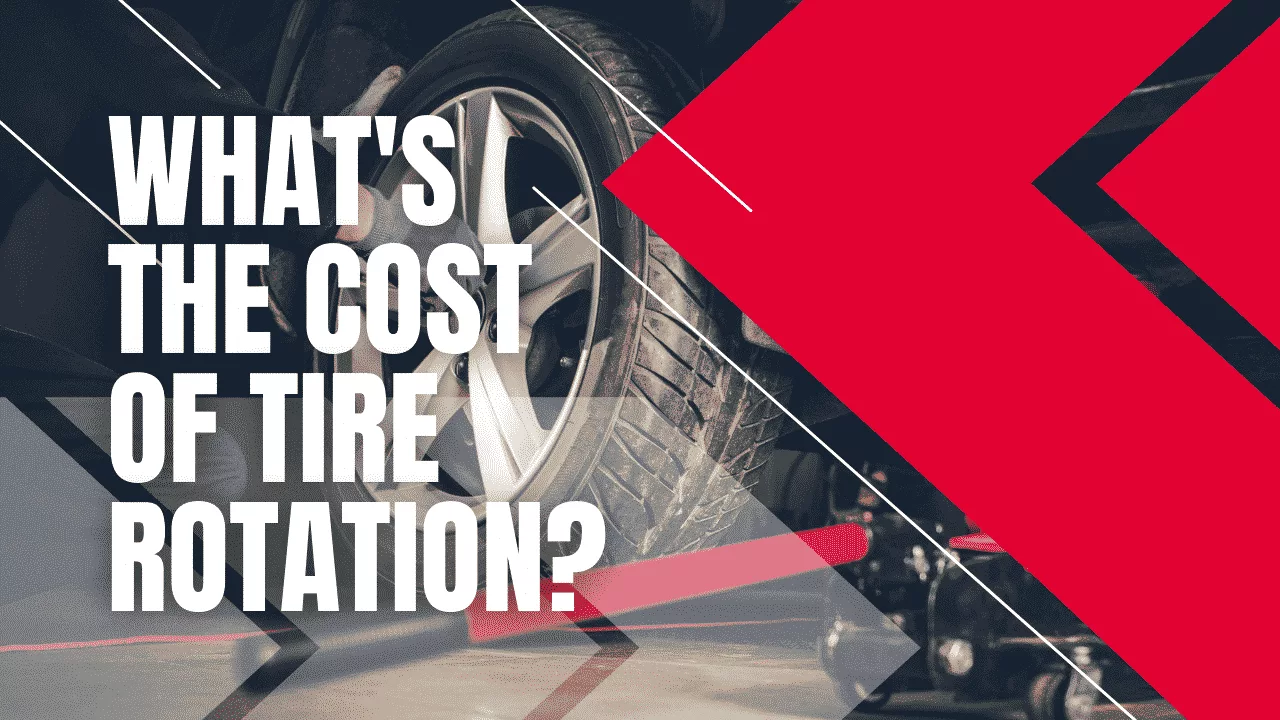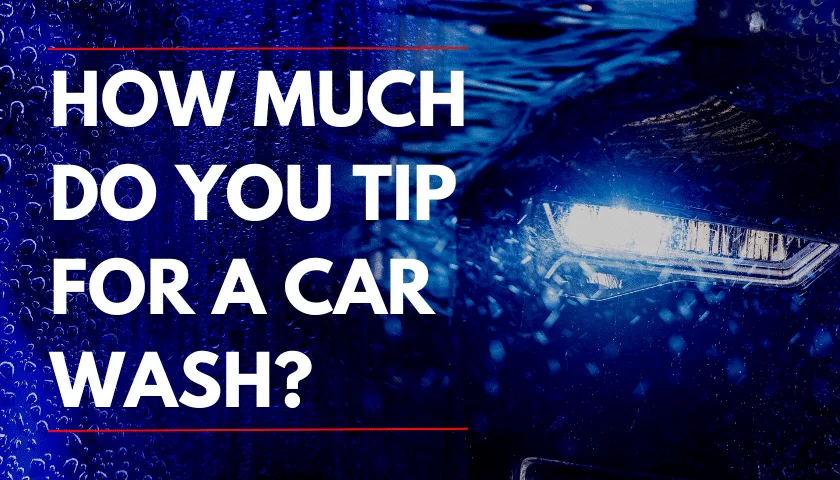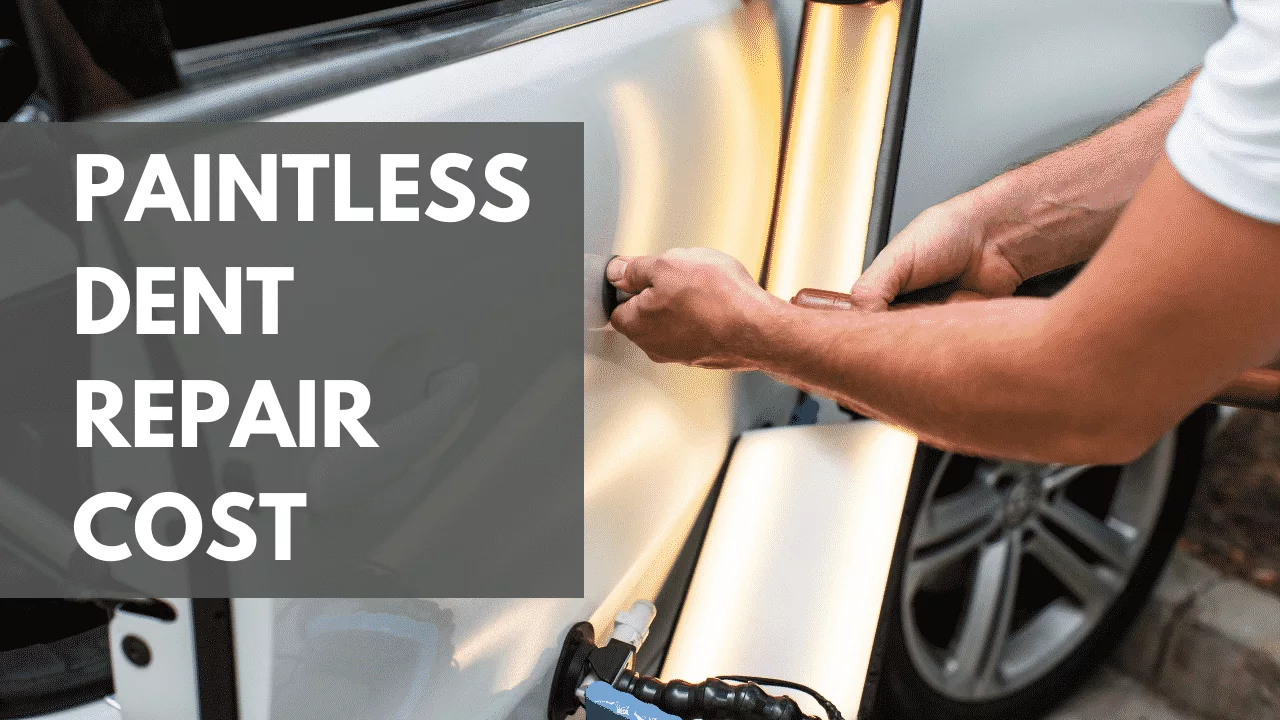Local Dent Repair Shops
We’ve heard from our readers, and we’re listening! We began by providing access to high-quality auto glass shops across the nation and have since grown our network of locations to include local Paintless Dent Repair Shops and Collision Repair Centers.
Your dent repair experience shouldn’t be overwhelming, so we wrote this article to help. After reading it, you’ll have our top recommended questions before hiring a dent repair specialist. You will also understand the tools used and how PDR is an excellent alternative to having conventional dent repair from a local body shop.
We’ll also cover picking the right shop location to fix your car. Plus, help you understand what to expect before and after the process. So let’s get started!
Dent Repair Knowledge
Before discussing qualifying questions to ask your local dent repair shops, let’s cover the repairable types of cars and dents, then look at the tools and how they work.
Types of Cars You Can’t Fix
Believe it or not, there are cars you can’t fix with dent repair. A vehicle panel is either aluminum, steel, or fiberglass. It’s easy to remove dents from an aluminum panel or body panel made of steel, but you’ll most likely need to speak with a collision repair center if you damage a fiberglass part.
Fiberglass doesn’t dent the way other surfaces do, so when something damages it, the surface will usually crack or break into pieces requiring new fiberglass and paint. Most modern vehicles won’t have fiberglass, but you can check out Technology.org to learn more about cars made with fiberglass.
Types of Dents You Can’t Fix
- Cracked Paint: You can’t fix all damage to a car’s surface, so how do you know if your dented panel is repairable or not? If the original factory paint has cracks, you’ll want to avoid PDR. Pushing on the back of the metal with a rod or glue pulling the surface can cause the paint to flake, exposing the metal. Having exposed metal can quickly lead to rust and other hidden problems down the road.
- Deep Dents: A deep dent will typically stretch the metal and force it to bend. This type of dent requires extensive repairs that may require removing panels and cutting away damaged areas. The best option for a deep dent is to find a qualified body shop to handle the job.
Tools Used by the Pros
Whether it’s removing hail damage or other small to medium dents, a skilled technician will need all or some of the following unique tools to complete the process.
Slide Hammer – This unique tool is used in conjunction with hot glue and glue tabs. Performing a hot glue pull with a slide hammer makes it easier to remove larger dents or dents that are inaccessible with the custom metal rods.
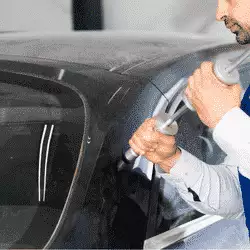
Dent Lifter – Most technicians use dent lifters for minor ding repair. These tools are great for removing inaccessible or difficult-to-reach dents from the back of the body panels.
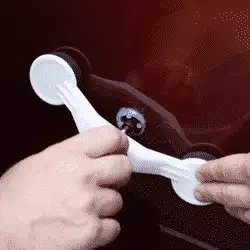
Glue Tabs – These particular tabs are for hot glue pulling with a dent lifter or a slide hammer.
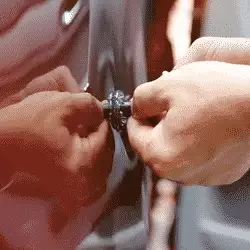
Metal Rods – There are many different sizes and shapes of rods used to reach the inside of panels with dents. Most dent techs can use less than five assorted metal rods to remove dents from any location on a car.
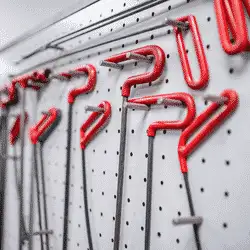
Reflector Board – A reflector board, also known as a fog board, is essential to helping fine-tune the final appearance of a dent. These boards are usually bright in color with a line in the center or multiple lines of different sizes, making it easy for the tech to see in the car’s paint reflection.
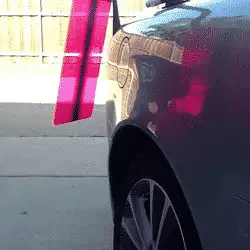
Light Board – Like a reflector board, a light board is lit from behind and has a single line down the center or multiple lines across it to help locate and fine-tune dents during the repair process. These boards are suitable in situations where the lighting isn’t great.

Knock-Down Stick: – While pushing on a dent from behind, creating a raised spot on the surface is possible. Knock-down sticks help remove these high points, so the surface of the metal appears flat and smooth again.

Dead-Blow Hammer: – These hammers are filled with sand to create a unique impact when tapping on the end of a knock-down stick to remove high points.
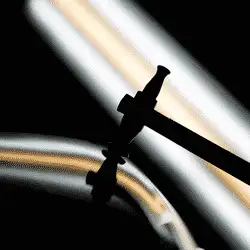
What to Expect
As a vehicle owner, knowing what to expect from the local business you’ve hired to fix your dents can help make sure you’re satisfied with the results. So let’s look at what to expect before and after the dent repair process.
Before the Dent Repair
- The technician will review the damaged area and then provide an estimated time to complete the repair.
- The technician will remove any parts necessary to make it easier to access the dent from the back of the panel. These areas would include the following:
- Headlights: Removing a headlight makes it easier to access the back of a fender.
- Taillights: Removing a taillight makes it easier to access the inside of a quarter panel area.
- Headliner: Removing the headliner provides better access to the car’s roof damage.
- Trunk Liner: Removing the lining from the trunk or deck lid is the best way to access dents on the car’s trunk.
- Hood Liner: Removing the heat shield liner from the hood provides easier access to any dents on the car’s hood.
- Fender Liner: If access to a dent on the fender or quarter panel is further away from the headlights or taillights, mobile technicians might remove the fender liner to provide a more extensive range of access to the back of those panels.
- The technician will then use a light, lightboard, or reflector board with the tools mentioned earlier in this article to remove the dents.
After the Dent Repair
- The technician will reinstall any parts removed before working on the car.
- The technician will polish the repaired area and then perform cross-checks to ensure the damage is completely gone and there are no issues with the original factory paint finish.
- Customer satisfaction is essential, so the technician will ensure that you approve of the entire repair and that you’re a happy customer before leaving.
Questions to Ask a Shop
It’s crucial to find experienced dent repair technicians who understand how to return your vehicle to its original condition. Consider the following questions before hiring a dent repair shop to help ensure you’re getting the best level of service possible.
- How long have you been in business? The longer a shop has been in business, the more likely it will have experienced technicians capable of repairing various dents.
- Are you technicians certified? Certifications don’t always indicate quality technicians. The key is to avoid an inexperienced technician and hire one that has been around for a while and can show samples of their work or provide references.
- Do you provide a guarantee or warranty? A reputable shop will have a warranty or guarantee for the work performed. The warranty will cover things like cracking paint or fixed dents that reappear in most cases. However, hail dent repairs aren’t typically covered if you encounter a subsequent hail storm. Get complete details on warranties and guarantees offered by the dent repair shop to ensure you know what to expect.
- Can I see examples of your work? When you’re looking for a shop to repair your vehicle, it’s important to see actual samples of their work. Samples give you a better idea of whether the technician is qualified to handle your job.
- Do you provide a rental car for repairs taking more than a day to complete? A dent repair company will usually fix minor dents within an hour. However, more complex repairs or hail damage repairs can have repair times of one to three days, depending on severity. You’ll file an insurance claim for hail repair in most cases, so that might include a rental car. We recommend checking with your insurance company or asking the person writing the estimate for repairs to verify coverage.
Insurance Coverage
Sometimes it’s necessary to file an insurance claim if your car has extensive damage from something like a hail storm. Automotive hail damage removal is expensive if excessive damage covers all vehicle parts. So we wanted to help you understand your rights, responsibilities, and options when filing an insurance claim for dent removal services.
Your Rights
- Shop Selection: Insurance companies have shops they prefer and recommend, but ultimately you have the right to select which shop completes the work on your vehicle.
- Cash Out: You can keep the cash or fix the car. However, if you keep the money and leave the car damaged, the insurance won’t cover future damage caused by hail storms. Be sure to ask your provider about cash-out options to have complete details before making any decisions.
Your Responsibilities
- Deductibles: The insurance company will pay the shop directly for the work performed, but you’re responsible for paying the deductible. Payments are typically required after the shop completes the job and you’re happy with the results.
- Quality Inspection: After the shop completes the work on your vehicle, the insurance company doesn’t typically visit the shop to inspect the work performed. Reviewing the repaired areas is your responsibility, and you should only approve payment if you’re happy with the final results.
Frequently Asked Questions
- Can you repair steel bumpers with PDR? The tools used in PDR will work well on sheet metal and aluminum, but steel bumpers are much more rigid and typically require a replacement when damaged.
- What’s a reasonable price for dent repair? The dent repair cost will vary depending on the damage, size of the damage, and accessibility. Check out the page we wrote on dent repair prices to learn more.
- Does PDR work on bumpers? The actual bumper of your car is a rigid steel bar hidden by a plastic cover. When you see a dent in the front or rear bumper, it’s usually the damaged plastic cover and not the steel bar underneath. Fixing the dented plastic cover typically requires a different process since it’s not sheet metal or aluminum. Ask the shop you’re speaking with if they have the necessary tools to fix plastic bumpers.
- How much is dent repair? The cost of repairs varies depending on the number of dents and the size of the damage. To learn more, check out the articles we wrote on paintless dent repair prices and hail damage repair costs.
- Will you need to drill holes to fix the dents? Drilling holes in the metal is unnecessary for a perfect repair. Damage that isn’t accessible from behind with the metal rods is repairable using a dent lifter or slide hammer, followed by a knock-down stick and dead-blow hammer.
- Can repaired dents come back over time? A professional repair that’s correctly performed will not return.
- Will insurance pay to fix a minor dent caused in a parking lot? If you parked too close to another car, chances are you’ll get a door ding. Damage like this is out of your control and generally covered by the comprehensive section of your insurance policy. We recommend checking with your insurance provider to ensure you have proper coverage to fix the damage.
- Will filing an insurance claim for hail damage repair service increase my rates? Filing a claim for hail damage won’t typically cause rates to go up independently. Instead, rate increases generally rely on the number of claims you make throughout the year. However, we recommend checking with your agent to confirm whether your rates will go up or not before filing a claim.
- What happens if the insurance says my car has too much damage to fix? Most insurance companies will give you two options if your vehicle is considered a total loss. Keep the car or cash out and let the insurance company have it. Each option will generally involve payment of some kind to you. If you don’t keep the car, most insurance providers will issue a check equal to the fair market value of your vehicle. Ask your provider about the different options they have for cars considered as total losses.
Key Takeaways
- Vehicles with fiberglass panels aren’t candidates for the paintless dent repair process.
- Repairing dents with cracked paint can lead to additional problems such as rust, so conventional body shop methods are best for fixing them.
- Paintless dent repair experts will remove parts such as headlights, taillights, or liners to make it easier to access and work on dents.
- Correctly repaired dents will not return over time and will leave the original factory paint finish with a smooth appearance.
- Bumper dent repair requires a different process to remove damage since bumpers aren’t typically sheet metal or aluminum.
What’s Next?
Whether you’re looking for a location to drop off your vehicle or a mobile company to repair dents at your home or office, we can help. We add repair locations to our database weekly, so if you don’t find a place in your zip code, give us a call or check back soon.

